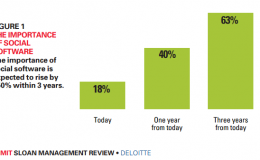Strategic Story: Off-centered Stuff for Off-centered People
In reflecting about our Dogfish Head Brewery tour, I was impressed with everything about the company, down to the creative use of fonts on the utility cupboards. To me, it embodies the essence of small business strategy, marketing, branding, and customer experiences. They live their strategic story. It’s not just the beer they produce. It’s the story they create.
President and founder Sam Calagione started in 1995 with one micro-brew and now sells a boatload of products and food services, which he calls, “Off-centered stuff for off-centered people.” (Note: Even his photo is off-centered!) How does he define off-centered?
“I define off-centered as defining goodness for yourself instead of letting the market, media, society, etc. define goodness for you.” He’s targeting other creative souls. Who doesn’t like to think of themselves as unique? Notice he’s not targeting beer-lovers per se.
He’s appealing to our universal needs to be special, to not conform to what everyone else is doing. He’s making a stand against big corporate brands and standing up for the rest of us who want to make our own choices. Those core values have become embedded in everything the company does. It’s part of their strategic story, one that everyone who works there lives and breathes.
In telling that strategic story, the Dogfish Head company defines a strategy that can grow along with the needs of their customers. In her new book, The Strategist: Be the Leader Your Business Needs, Harvard Business School professor Cynthia Montgomery says the right way to lead strategy requires confronting four questions:
- What does my organization bring to the world?
- Does that difference matter?
- Is something about it scarce and difficult to imitate?
- Are we doing today what we need to do in order to matter tomorrow?
For business leaders, becoming a strategist starts with getting clear on why, whether, and to whom your company matters. While that may sound obvious at face value, it’s something that regularly stymies small business owners.
Think about it in your own company. How is your strategy reflected in the company’s story? Does it show up in all your marketing, branding and customer experiences? How do you tell your strategic story?
I’d love to hear from you, leave a comment!






